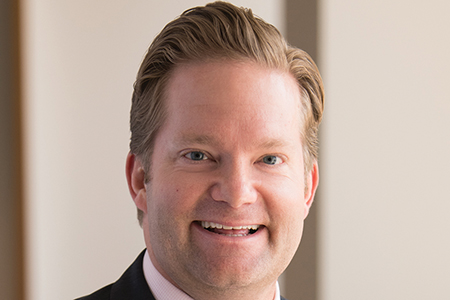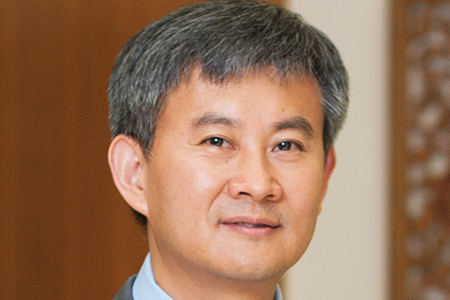Medtech Patents in China: New Guidance From China
By Nathan Smith & Shaobin Zhu
 China has taken another step in changing several aspects of its patent examination guidelines, which provides substantial benefits and protections for medtech IP owners.
China has taken another step in changing several aspects of its patent examination guidelines, which provides substantial benefits and protections for medtech IP owners.
The amendment to the China Guidance for Patent Examination (Amended Guidance) took effect on Nov. 1, 2019, and involves a series of changes that will alter the course of patent prosecution in China. Below we provide some of the key takeaways from the Amended Guidance that medtech companies should consider in their Chinese patent portfolio strategies.
DEFERRED EXAMINATION FOR UP TO THREE YEARS
While most applicants are eager to urge the examination process forward to obtain patents as soon as possible, medtech companies — especially in the early stages — must balance the desire to aggressively pursue issued patents with other constraints, such as financing or changes in product development. As such, medtech companies can benefit by controlling how quickly prosecution of their application proceeds.
The Amended Guidance enables an applicant to request deferred examination of its application for a period of one, two, or three years either (1) at the time of requesting substantive examination for invention applications or (2) at the time of filing the application for utility model and design applications (which do not require substantive examination). Applicants should note that there is no cost to apply for deferred examination. However, the notice on the Form of Substantive Examination Application updated in November 2019 by the China Patent and Trademark Office states that “the deferral period cannot be altered, and the deferral application cannot be withdrawn once it is submitted.” Further, although applicants may delay examination for invention applications, the request for deferred examination does not delay publication of invention applications. Therefore, applicants should be careful in leveraging the new deferred examination option.
PATENTING OF INVENTIONS RELATED TO EMBRYONIC STEM CELLS NOW ALLOWED
The Amended Guidance significantly changes the available protection for embryonic stem cell technology. Previously, Chinese patent law forbade inventions related to the use of human embryos on the basis that it was a “violation of social morality.” However, medtech companies are now able to pursue patent protection for inventions that satisfy the “14-day rule”: a human embryo research limitation that permits research of human embryonic stem cells for a maximum of 14 days after the point of fertilization. Although the Amended Guidance does not permit in vivo development, this change presents a major opportunity for medtech and biomedicine companies.
CONSISTENT USE OF APPLICANT NAME IN DIVISIONAL APPLICATIONS, ASSIGNMENT DOCUMENTS, AND POWER OF ATTORNEY DOCUMENTS
Medtech companies must be wary of the new emphasis on applicant-naming requirements under the Amended Guidance. Often, whether through acquisition, merger, or other corporate events, medtech companies must develop and integrate new patent families into their existing patent portfolios. However, under the Amended Guidance, if the applicant named in a divisional application is different from the applicant named in the parent application, the divisional application will be considered to have not been filed ab initio (i.e., from the beginning). This incurable defect can be avoided by filing the divisional application in the name of the currently named applicant in the parent application (whether or not a name change has been recorded in the parent application).
Further, medtech companies must also be wary of the requirement that the patent assignment bear the same signature as the power of attorney when the application is filed. The practice of having a single “company representative” who signs all assignment and power of attorney documents on behalf of the company is not as common in the United States as it is, for example, in Japan, China, and Korea, where company representatives may often use company stamps. In fact, given that the fast-moving world of medtech startups often produces high turnover in company leadership, medtech companies will need to be especially careful and, where possible, strive to maintain signatory consistency for formal documents.
CORRECTING THE LOOPHOLE OF “UNLIMITED DIVISIONAL APPLICATIONS”
Under Chinese patent law, if the claims of a patent application are not directed to a single patentable or technical concept, a patent examiner should reject the claims as lacking “unity.” Under the Amended Guidance, in a first divisional application where (1) a notice of further division is issued by examiner or (2) the examiner rejects the claims as lacking unity in an office action (collectively, unity rejection), the applicant may apply for a second divisional application only if the first divisional application receiving unity rejection (or the parent application of the first divisional application) is still pending. Otherwise, a second divisional application will not be permitted.
This changes prior guidance, which allowed the filing of a second divisional application after a first divisional application received a unity rejection as long as there was a related, pending application in the patent family (copendency with the first divisional application was not required). Some practitioners considered that the prior guidance permitted the filing of unlimited further divisional applications. The Amended Guidance closes this perceived loophole. Thus, medtech companies must more carefully develop and implement portfolio strategies for divisional applications.
PRIORITIZED EXAMINATION FOR KEY TECHNOLOGIES
The Amended Guidance now makes it possible for medtech companies to request prioritized examination if the technology (1) is related to the industry advocated by the government; (2) has a significant effect on national or public interests; or (3) has certain market demand. As health and medical issues become increasingly important to the Chinese government, medtech companies may benefit from the new opportunity to access prioritized examination. Generally, applications allowed to enter the prioritized examination queue should expect examination to begin within a period of months, not the current one- to two-year normal period.
SUBSTANTIVE ISSUES CAN BE DISCUSSED BY CALLING THE EXAMINERS
Prior to the Amended Guidance, telephone communication with patent examiners was only possible to discuss formal defects that were of minor significance and unlikely to cause misunderstandings. The Amended Guidance now enables examiners and applicants to discuss substantive issues, including their understanding of the claimed inventions and related prior art references, by telephone. This change allows medtech companies valuable access to Chinese patent examiners and facilitates improved advocacy in protecting critical technology.
EASIER TO INITIATE INTERVIEWS WITH EXAMINERS
The Amended Guidance also removed certain prerequisites for initiating an examiner interview. For example, an examiner interview can take place (1) before the examiner has issued the first office action in the application; and (2) at times other than after issuance of the first office action or when offered by the examiner. As such, the patent applicant or the examiner can now initiate an interview at any time during substantive examination. This will allow medtech companies to more easily access Chinese patent examiners and likely lead to improved communication and efficiency during examination.
INCREASED PATENT EXAMINER BURDEN OF PROOF IN SHOWING THAT A CLAIMED FEATURE WAS “WELL-KNOWN KNOWLEDGE IN THE ART”
The Amended Guidance enhances patent examiners’ burden of proof when issuing rejections that in any way rely on “well-known knowledge in the art.” Examiners must now provide supporting evidence or reasons if applicants object to the reliance on such “knowledge.” Even absent an applicant’s objection, the Amended Guidance still requires examiners to provide relevant evidence in the office action if the examiner argues that key technical features of the invention are “well-known knowledge in the art.” This important evidentiary requirement will aid medtech applicants given that such technology often requires a specific, nuanced scientific or technical understanding that may be oversimplified by nonapplicants.
TAKEAWAYS
These changes demonstrate China’s commitment to evolving and improving its IP protection for medtech companies. As these changes are factored into portfolio strategies, medtech companies may thereby improve their effectiveness in achieving their goals in and out of the Chinese marketplace.
Morgan Lewis associate Jensen Xu contributed to this article.
NATHAN SMITH is a partner in the law firm of Morgan Lewis. He helps companies develop and implement competitive market strategies, complete IP transactions, diligence, FTO, and licensing, and procure worldwide utility and design patent protection.
SHAOBIN ZHU is a partner in the law firm of Morgan Lewis. He advises on IP litigation as well as client counseling, IP licensing, opinion work, patent prosecution, and open source software strategy.
